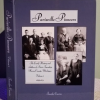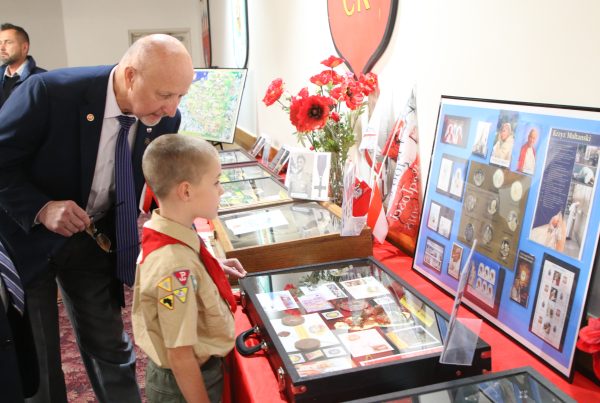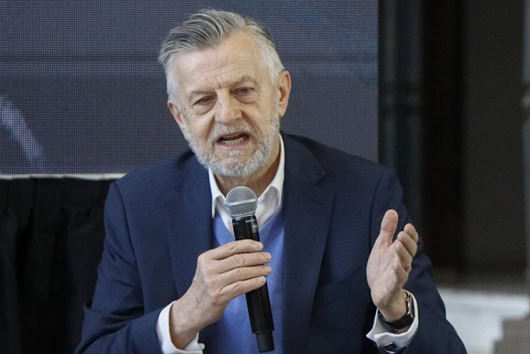Maya G. Pelshaw
There have been many scientific discoveries that have changed the world, many of which have been from scientists and engineers of Polish descent. Most people know and are familiar with the work of Marie Curie and Nicolaus Copernicus. However, there are many others who have had significant findings and contributions to society that often get overlooked, such as Albert Sabin, Hilary Koprowski, and Tadeusz Reichstein, all of who1n have made a significant difference in the medical industry.
Albert Sabin was born in Bialystok, Poland, in 1906 and immigrated to the United States with his family in 1921 to avoid Jewish persecution (“Dr. Albert B. Sabin”). He attended York University, where he received his medical degree in 1931. He then went on to study polio, which was in a state of global epidemic at the time, causing death or paralysis to those infected. After the start of World War II, he joined the U.S. Army Epidemiological Board’s Virus Committee. He assisted in creating vaccines for multiple diseases (“Dr. Albe1t B. Sabin”). After the war, he refocused on polio. During this time, he ingested a weakened version of the virus as an experiment, which led to the development of the first-ever oral polio vaccine. Later, Dr. Sabin served as President of the Weizmann Institute of Science and then as a full-time consultant to the U.S. National Cancer Institute in 1974. He eventually retired and became an advocate for fighting poverty and encouraging international cooperation. Albert Sabin passed away in March 1993 (“Dr. Albert B. Sabin”).
Similarly, Hilary Koprowski was born in Warsaw, Poland, where he received his medical degree (Plotkin). During the Nazi invasion, he fled Poland with his family to Italy and later to Brazil, where he first started working on virus treatments. His work in a laboratory in Brazil led him to the United States, where he developed a polio vaccine. Like Albert Sabin, Hilary Koprowski ingested a strain of polio in the early 1950s, finding it successful (Plotkin). In the mid-to-late 1950s, Sabin and Koprowski worked separately toward the same goal of finding a cure for polio. In 1957, Koprowski left Lederle to work as the Director of the Wistar Institute on the campus of the University of Pennsylvania in Philadelphia, where he continued studying virology. Though Albert Sabin ultimately succeeded in developing the oral polio vaccine that gained widespread use, Koprowski shifted his interests to studying measles and later rabies (Plotkin). Koprowski wrote numerous articles on various viruses and received many awards during his lifetime. He passed away in 2013 after a lifetime of dedication to the medical field (Plotkin).
Tadeusz Reichstein, also known as Tadeus Reichstein, was born in Wloclawek, Poland, in 1897 (“Nobel Prize in Physiology or Medicine 1950.”). His family moved to Kiev when he was a child and later relocated to Zurich, Switzerland, where he attended Eidgenössische Technische Hochschule (ETH) and obtained his degree in Chemistry in 1920. During his studies, he researched the aroma of coffee while attending lectures at the technological university. In 1929, he became a lecturer at ETH, specializing in organic and physiological chemistry (“Nobel Prize in Physiology or Medicine 1950”). In 1933, Reichstein shifted his focus to studying hormones of the adrenal cortex, particularly aldosterone. His work, alongside that of other scientists, led to the isolation of cortisone and the discovery of its therapeutic value in treating rheumatoid arthritis (“Nobel Prize in Physiology or Medicine 1950”). Later, he received multiple honorary titles and director positions at the University of Basel, where he oversaw the construction of a new Institute of Organic Chemistry. In 1947, he was awarded an Honorary Doctorate from the Sorbonne in Paris. In 1950, Reichstein, along with his collaborators, was awarded the Nobel Prize in Physiology for his work on cortisone isolation. In 1952, he was elected a Foreign Member of the Royal Society in London (“Nobel Prize in Physiology or Medicine 1950”). He passed away in August 1996.
These three doctors’ and scientists’ findings contributed greatly to society. The oral polio vaccine was very effective in reducing and stopping the global polio epidemic. The oral vaccine has now been changed into a traditional injectable vaccine to prevent the virus. The introduction of the isolation of cortisone and its effectiveness has advanced medical procedures through the use of hydrocortisone to treat those with chronic conditions.
Works Cited
“Dr. Albe1t B. Sabin.” Sabin Vaccine Institute, 18 Feb. 2025, www.sabin.org/about/our-history/dr-albert-b-sabin/.
Plotkin, Stanley A. “In Memoriam: Hilary Koprowski, 1916-2013.” Journal of Virology, U.S. National Library of Medicine, Aug. 2013, p1nc.ncbi.nlm.nih.gov/articles/PMC37 l 9820/. “Nobel Prize in Physiology or Medicine 1950.” NobelPrize.Org, www.nobelprize.org/prizes/medicine/l 950/reichstein/biographical/. Accessed 20 Mar.









